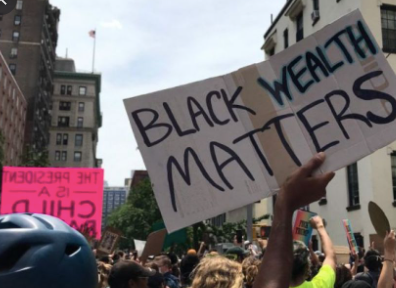Just when you thought slavery and the cruelty of enslaved human beings couldn’t get any worse, the very thing that makes America go round, the Stock and Bond Market, had a gigantic hand in it.
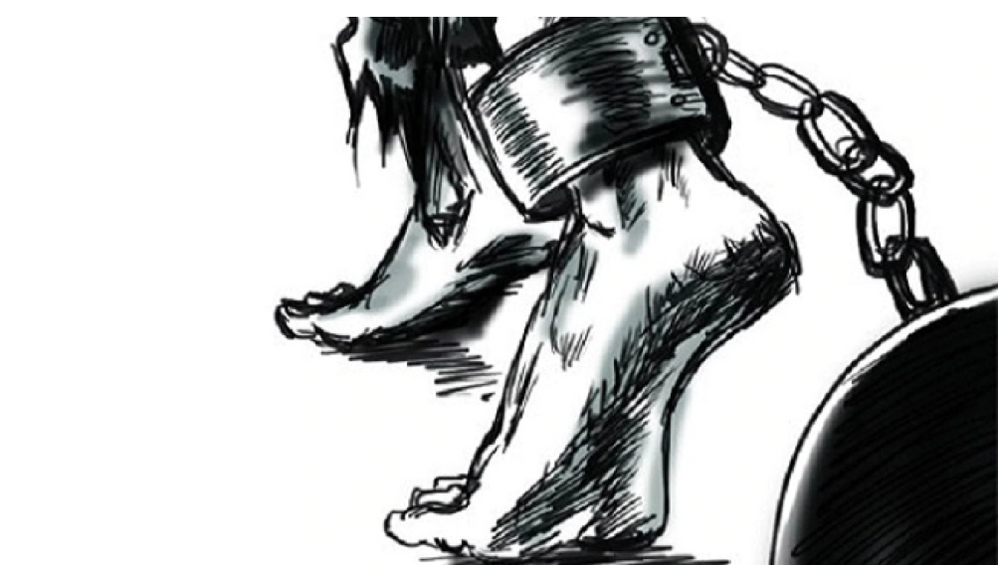
Enslaved people were brought to work on the cotton, sugar and tobacco plantations. The crops they grew were sent to Europe or to the northern colonies, to be turned into finished products. Those finished goods were used to fund trips to Africa to obtain more slaves who were then trafficked back to America.
Most of us know this story.
They call it the ,triangular trading route.
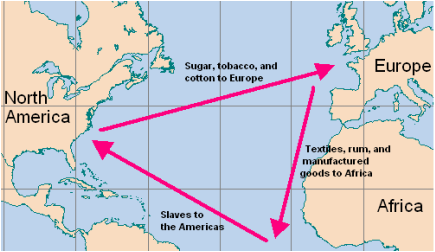
This triangular trading route was profitable for investors.
The Triangular Trade was three-sided, involving voyages from England to Africa, Africa to the Americas, the Americas back to England. The trade fell into the three categories: Colonialism (sugar, tobacco, rice and cotton materials), manufactured products (guns, cloth and beads), and Slaves.
Enslaved Africans became part of the international trade network of the period, used largely by the Spanish and the Portuguese in the Americas. Sir John Hawkins is often considered the pioneer of the British slave trade because he was the first to run the Triangular trade route across the Atlantic.
It is still gut wrenching to imagine that a system that once treated human beings as commodities—with price tags—was not only legal, but was considered to be ethical and a major source of wealth.
However, by the early seventeenth century, the transatlantic slave trade was a sophisticated commercial system. Some African captives were sold multiple times and detained for months in markets along interior slave routes before encountering European slave ships on the coast.
Only after an already unstable passage from the interior were survivors exchanged for a combination of textiles, weapons, alcohol, or other European trade goods and put aboard large canoes that took them to slave ships anchored off the coast. A good example of this story would be the Cape Coast Castle that served as a trading post in 1652 for European nations and as the headquarters of British colonial administration for the Gold Coast Colony. Today the Castle is a designated UNESCO World Heritage Site.
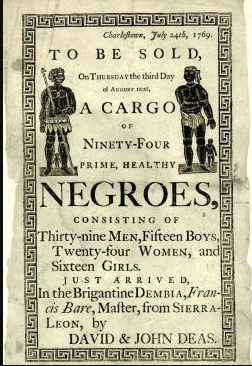
Slave voyages were greatly profitable for their investors. After the captain landed the ship in a port, African survivors were inventoried, fed, bathed, and oiled to create a healthier appearance (even though they were probably exhausted, starving, and weak).The crew used all kinds of methods to disguise the physical bruises and wounds on the African captives’ bodies. Some traders delivered Africans directly to merchants who had previously placed orders with the shippers. Other Africans were sold on auction blocks to the highest bidders in major ports like Port-au-Prince, Bridgetown, or Salvador de Bahia. Can you imagine a bunch of white people scrambling and grabbing you as they purchase you, taking you to an unknown place and maybe even snatching you away from your family? Imagine not understanding their language but realizing what is about to happen to you.
The Caribbean islands were typically the first landing for many Africans before the ship captains sent them off on another voyage opening up a large inter-coastal American slave trade with Caribbean merchants. Slave ship captains often shipped Africans to other islands, including Spanish colonies in Central and South America and slave markets along the Pacific coast. African survivors who arrived in Jamaica and Saint-Domingue (now Haiti), were taken into the mountains and wooded interior to develop new properties or replace enslaved people who had died from harsh labor and living conditions.
Later in the 19th Century, their descendants were moved yet again to the new cotton and sugar frontiers of the southern United States. Here, US banks and southern states would sell securities that helped fund the expansion of slave run plantations. They started purchasing insurance policies to balance the risk of forcing human beings from Africa to America.
These policies protected against the risk of a boat sinking, and the risks of losing individual slaves once they made it to America.
Some of the largest insurance firms in the US – New York Life, AIG and Aetna – sold policies that insured slave owners would be compensated if the slaves they owned were injured or killed! In 2005, JP Morgan Chase, currently the biggest bank in the US, admitted that two of its subsidiaries – Citizens’ Bank and Canal Bank in Louisiana – accepted enslaved people as collateral for loans. The predecessors that made up Citibank, Bank of America and Wells Fargo are among a list of well-known US financial firms that also benefited from the slave trade. U.S. banks have recently made public apologies for the role they played in slavery.
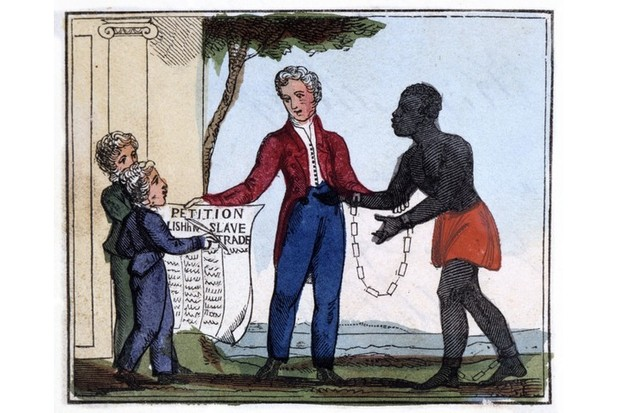
How it worked was cotton accounted for more than half of the U.S. shipments, and what didn’t sell was sold to parts of the Northern states for fabric. As you know, American banks had no problem accepting enslaved people as assets from Southern plantation owners.
“Slavery was an overwhelmingly important fact of the American economy,” explains Sven Beckert, Laird Bell Professor of American History at Harvard University.
It is incredibly ironic how many of the worlds great architectural creations, eternal institutions, and governing bodies exist because of the slave trade. The bittersweet admiration for how America stands on its on two feet.
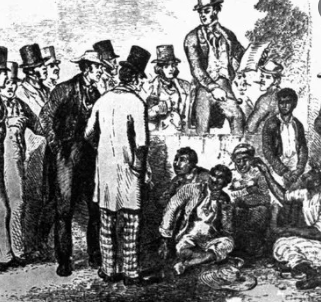
New York City was home to one of the largest slave markets in the country. In June 2015, Mayor de Blasio unveiled a new plaque marking the spot on Wall Street where the slave market once stood, dedicating it to the thousands of enslaved people who passed through. By 1741, 1,800 people among a population of 10,000, were Black slaves. They consisted of one third of the city’s workforce and one in every five households owned at least one slave. There were so many Black people in New York, that they feared the slaves would organize and uprise. City slaves were different from plantation slaves. City slaves had considerable mobility and were often left unsupervised, so slaveholders decided to take away the amount of time slaves could spend with each other. They created a slave market to continuously buy and sell off slaves, preventing slaves from getting too comfortable. A law was passed in 1702 that prohibited slaves from gathering in groups of three or more! After all that, it still didn’t matter, New York became home to two of the most gruesome slave rebellions in American history. (We will save those stories for another day)
In 1726, another ordinance was passed that declared a sole location called the the Meal Market, for selling corn, grain, or meal. It became one of the most profitable slave markets in the country – second only to Charleston, South Carolina. New African slaves arriving at Pier 17, now the popular tourist destination South Street Seaport, were auctioned off. Its profits made way for the city of New York’s lawyers, clerks, dockworkers, carpenters, and more!
You want to know where the name Wall Street really came from?
Wall Street was once a wall built by slaves and free Africans. In 1653, under the Dutch Governor William Kieft, the wall was constructed to protect Dutch settlers from Native American raids. The wall began as a picket fence before the Dutch expanded it to a 12-foot-high barrier over the years. The African slaves who were responsible for its construction were owned by the Dutch West India Company. Some of them were actually “half-free,” meaning they could own property, testify in court, bear arms, attend church, and marry.
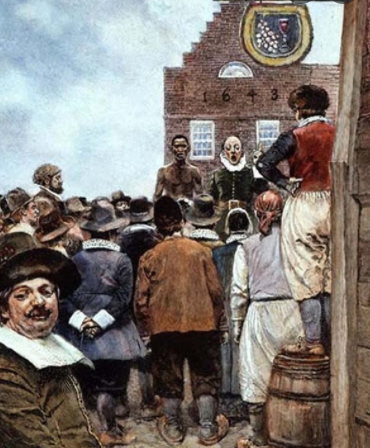
The signing of The Buttonwood Agreement, which created the New York Stock Exchange, was signed just a few blocks away from the location of the Meal Market. Twenty-four brokers and merchants designed the Buttonwood Agreement to regulate trading securities and standardize commission compensation. The Agreement was signed on May 17, 1792, at 68 Wall Street under a sycamore tree. The Buttonwood Agreement dealt with many of the financial issues surrounding the slave trade.
By the mid-eighteenth century, the Meal Market became a popular spot for the Merchants Coffee House. These merchants brought a different sophistication to the area and didn’t like the kind of traffic the slave trading brought, so they successfully tore down the Meal Market.
Between the years 1857 and 1862, during the Civil War, the Trans-Atlantic Slave Trade made a comeback; which had been illegal for five decades.
Who was at the forefront of this highly illegal activity; New York City?
In 1857, the New York Journal of Commerce reported that, “downtown merchants of wealth and respectability are extensively engaged in buying and selling African Negroes, and have been, with comparatively little interruption, for an indefinite number of years.”
Men, women, and children continued to be bought and sold throughout the city. Good ol’ America didn’t stop there. The United States solved its land shortage by taking millions of acres from Native Americans, often with the use of military force. Enslaved workers demolished trees by axe, burned the underbrush and leveled the earth for planting, ripping forest and lands apart just so they could profit off the Cotton they needed to grow on these lands.
When an accountant depreciates an asset to save on taxes or when a midlevel manager spends an afternoon filling in rows and columns on an Excel spreadsheet, they are repeating business procedures whose roots go back to ,slave-labor camps.
Plantations pumped out not just cotton bales but volumes of data about how each bale was produced creating an organization very advanced for its time. Like today’s titans of industry, planters understood that their profits climbed when they squeezed all the effort out of each worker. They paid close attention to inputs and outputs by developing precise systems of record-keeping. Plantation entrepreneurs developed spreadsheets, like Thomas Affleck’s “Plantation Record and Account Book,” which ran into eight editions circulated until the Civil War. This book literally went finger by finger on how to use free labor. Enslavers used the book to determine end-of-the-year balances, tallying expenses and revenues and noting the causes of their biggest gains and losses.
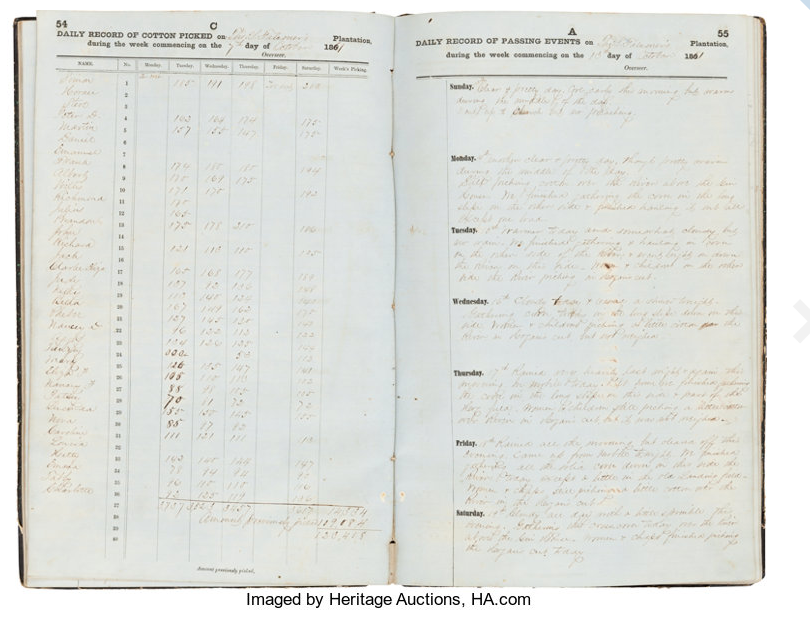
Years after abolishing the African slave trade in 1807, Britain, and much of Europe along with it, was bankrolling slavery in the United States. To raise capital, state-chartered banks shared debt made by slave mortgages and repackaged it as bonds promising investors annual interest!
The cotton plantation was America’s first big business, and the nation’s first corporate Big Brother overseer.
America has always built themselves off the greed of money and doing whatever needs to be done to get it. Using slaves as assets to pay off debts or even using them as collateral for loans. Did you know that Thomas Jefferson mortgaged 150 of his enslaved workers to build Monticello? Of course this all came to an end when cotton started to actually overproduce because of cheap land, labor and credit. Consumer demand couldn’t keep up with the supply and the value of cotton dropped. It even pulled the value of enslaved labor down. Now, enslavers couldn’t repay their loans and the banks couldn’t make interest payments on their bonds. This ended with the Panic of 1837, a financial crisis in the United States that triggered a multi-year economic depression.
America continues to ignore it’s racist capitalist mindset which, if not fixed, will continue to corrupt the country. We have already seen it in the stock-market crash of 1929 and even the recession of 2008. Slavery didn’t just deny Black freedom, but built white fortunes, originating the Black-white wealth gap that annually grows wider — one reason is that American capitalism was founded on the lowest road there is. It is the culture of acquiring wealth without work, growing at all costs and abusing the powerless. How America got this way will always start with slavery and deserves a major reckoning.
